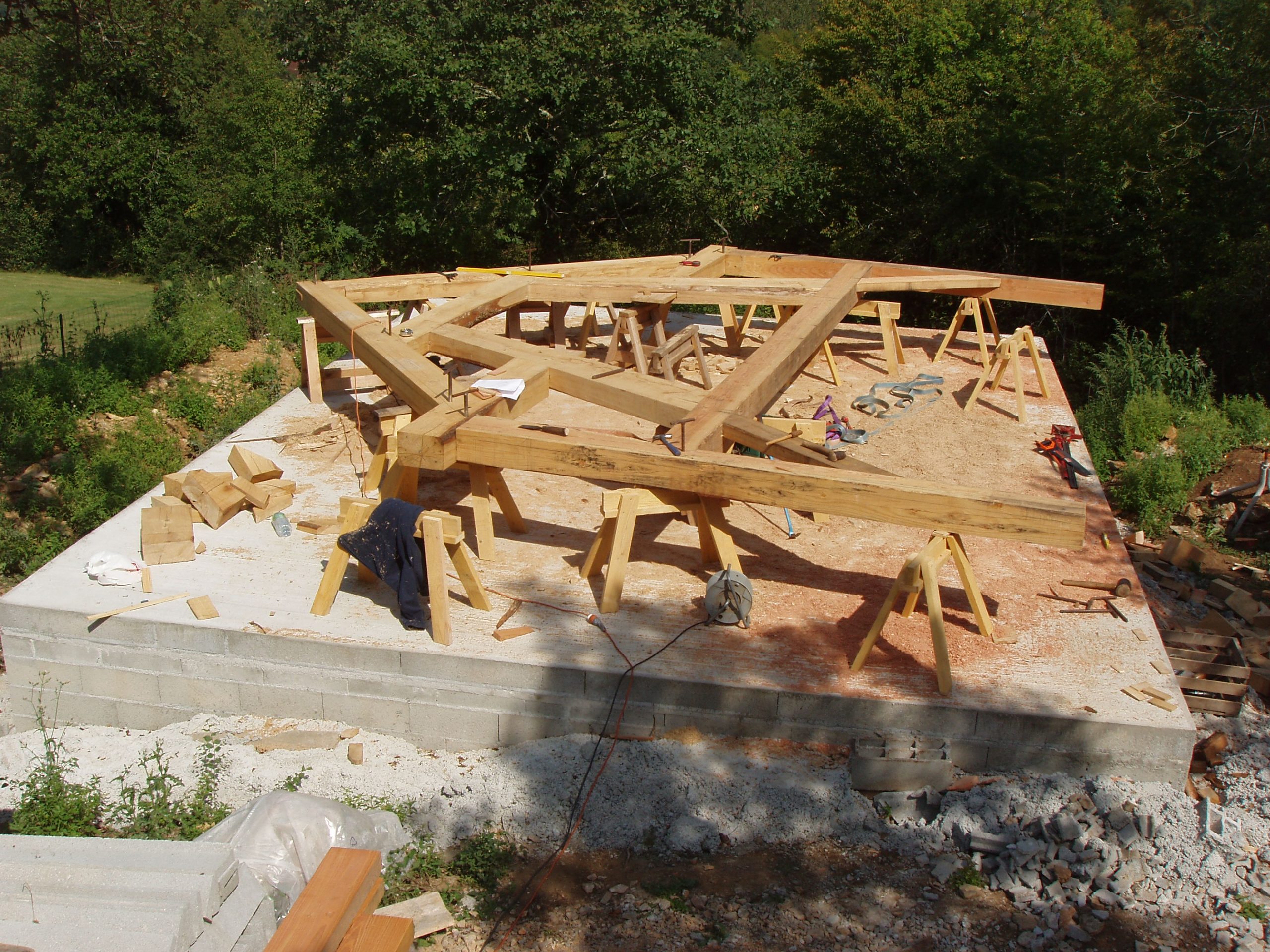Frequently Asked Questions
answers to some common questions…
It’s a good idea to do a little research and get a basic idea of what you would like to see when your job is completed- by being here you may have already done that? Then go to my contact page and get in touch by form, phone or email. Give me as much detail as you reasonably can although I won’t need a ton of information to begin with because your ideas will develop and clarify as we discuss your options.

Framing with green oak is a bit of a Bentley because the raw material is quite expensive and the process of cutting and raising the frame is labour-intensive. Cost depends on the quantity and quality of the raw material and the complexity of the structure but expect to pay from £5000 for an open entrance porch and up to £15000 for an enclosed porch with a canopy. Don’t forget: my price is for a start-to-finish project: project preparation, foundation, wall and roof frame, roof deck and roof covering- and all finish detailing. This is an excellent value for the commitment you will receive from me, the quality of the product and the impact it will have on your home.
The consultation and notification process can be quick and easy because porches generally fall into the category of a “Permitted Development”- as long as certain criteria are met. For the hard work allow four to six weeks once I’m hands-on cutting your frame. The time is divided between the laying-up, marking and cutting of the frame- which is done in the yard- and the on-site preparation, frame raising, roof covering and finish detail. The ratio of work in the yard to work on-site will vary with the type of structure, the site conditions- and the weather to some extent.
No, you have a choice of timber. It’s true that we Brits love oak- it is ingrained in our national history and identity- and oak is certainly the most popular framing material. Another fine wood is Larch which has a lovely grain, lots of strength and naturally withstands difficult conditions. The same can be said for Douglas Fir and so these three awesome trees provide me with the bulk of my cutting stock. I have used a lot of Sweet Chestnut too- which has a stunning grain- but it is expensive. Sometimes I have cut a frame using a melange of woods- even apple, peach and cypress for braces and ties. All frames are cut from “green” timber- no matter the species.
All wood species which are used for traditional timber framing are green woods: green-oak is a term I think most people have heard. It simply means that the trees have been felled quite recently- within weeks or a few months- and have not seasoned, or dried fully- a process which occurs slowly and naturally as the moisture in the wood is lost by evaporation. Oak, Larch and Douglas Fir are worked and assembled green because they can be worked efficiently and accurately and the Greenwood is kind on the cutting edges of chains and blades. Once your frame is raised the wood seasons over time and leaves you with an incredibly strong and beautiful structure.
Yes, my contacts supply only responsibly sourced timber. Many communities grow timber as a cash crop and it is just not in their interest to abuse their resource. For example: in the French countryside I would buy woodland by the square metre and fell all of the mature timber without any need to seek a permit- visit the cutting site just a year later and the uncut, young trees have had an obvious growth-spurt and last year’s natural seeding has already grown to an impressive size. Every year France grows more timber than it cuts. An oak tree grows from acorn to felling size in about a human lifespan and once the cycle of growing and cutting is established and managed then the trees just keep coming. I am a bit of a tree-hugger and have total respect for this wonderful, natural resource.
Yes. My guarantee is my commitment to your project. I do not ask for full and final payment until you are delighted with the result- please read the reviews spread around my website: these are genuine reviews and refer to the work you can see here on all pages and in the gallery. Your finished project will be the result you see on completion day- but with the addition of a few seasons of weathering as the wood takes on more character. I will leave you with a document describing this process- the document also explains how to best care for your frame. Then I will contact you after the passing of a few seasons just to be sure that all is good- but you are invited to contact me at any time during and after the build.


